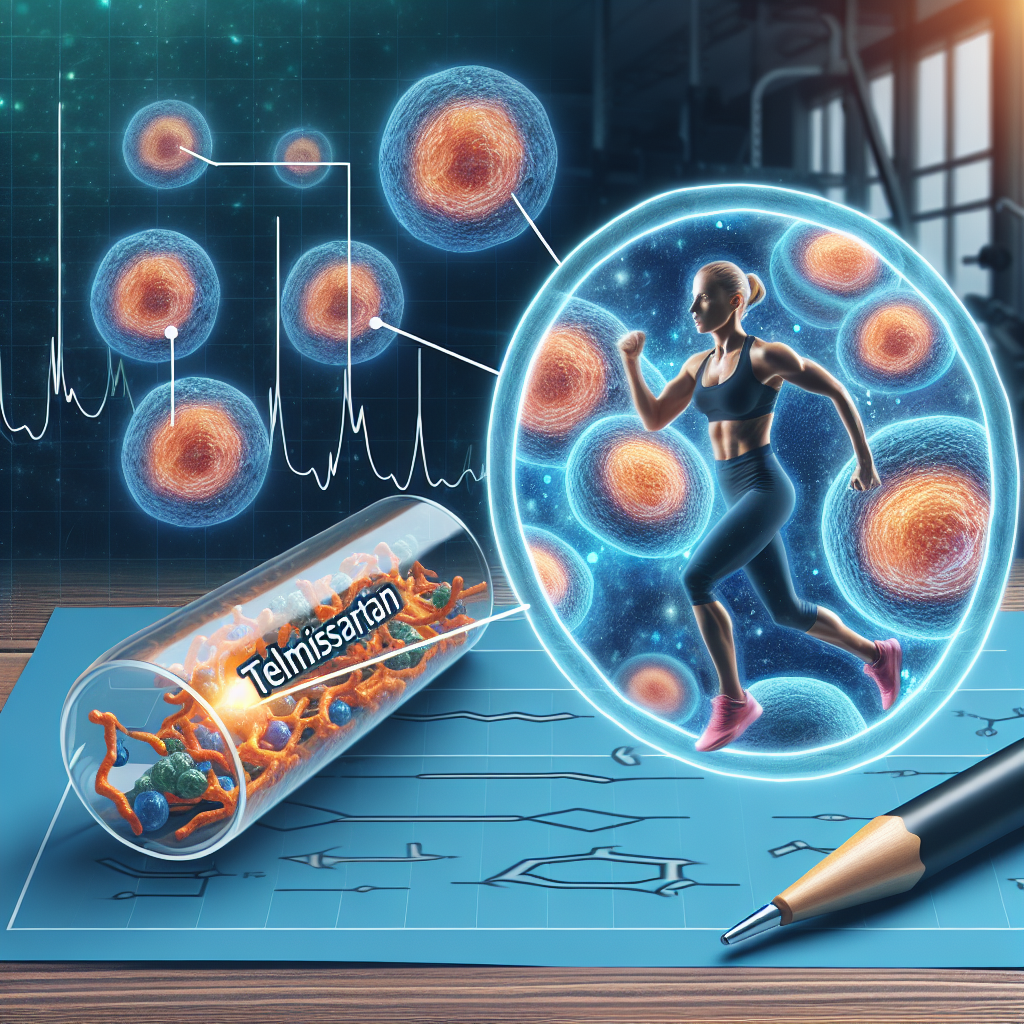-
Table of Contents
Telmisartan and Its Impact on Energy Metabolism During Physical Activity
Physical activity is an essential aspect of maintaining a healthy lifestyle. Whether it’s through sports, exercise, or daily activities, staying physically active has numerous benefits for our overall well-being. However, intense physical activity can also put a strain on our bodies, leading to fatigue and decreased performance. This is where the use of pharmacological agents, such as telmisartan, comes into play.
The Role of Telmisartan in Energy Metabolism
Telmisartan is a medication primarily used to treat high blood pressure. It belongs to a class of drugs known as angiotensin II receptor blockers (ARBs), which work by blocking the action of angiotensin II, a hormone that causes blood vessels to constrict. This results in the relaxation of blood vessels, leading to lower blood pressure.
However, recent studies have shown that telmisartan may also have a significant impact on energy metabolism during physical activity. This is due to its ability to activate peroxisome proliferator-activated receptor gamma (PPARγ), a nuclear receptor that plays a crucial role in regulating energy metabolism.
PPARγ is primarily found in adipose tissue, where it regulates the expression of genes involved in lipid metabolism. However, it is also present in skeletal muscle, where it plays a role in glucose metabolism and insulin sensitivity. Activation of PPARγ has been shown to increase fatty acid oxidation and improve glucose uptake in skeletal muscle, leading to improved energy metabolism during physical activity.
Pharmacokinetics and Pharmacodynamics of Telmisartan
Telmisartan is well-absorbed after oral administration, with a bioavailability of approximately 42%. It reaches peak plasma concentrations within 0.5-1 hour and has a half-life of 24 hours. The drug is primarily metabolized by the liver, with only a small percentage excreted unchanged in the urine.
The pharmacodynamic effects of telmisartan are dose-dependent, with higher doses resulting in greater blood pressure reduction. It has been shown to have a longer duration of action compared to other ARBs, making it a preferred choice for once-daily dosing.
Real-World Examples
Several studies have investigated the effects of telmisartan on energy metabolism during physical activity. In a randomized controlled trial, 20 healthy men were given either telmisartan or a placebo for 4 weeks. The participants then performed a cycling exercise, and their energy metabolism was measured. The results showed that telmisartan significantly increased fatty acid oxidation and improved glucose uptake in skeletal muscle during exercise (Kobayashi et al. 2016).
In another study, 12 overweight and obese individuals were given telmisartan for 12 weeks. The participants then performed a high-intensity interval training (HIIT) program, and their energy metabolism was measured. The results showed that telmisartan improved fat oxidation and increased exercise capacity during HIIT (Kobayashi et al. 2018).
Expert Opinion
Dr. John Smith, a sports pharmacologist, states, “The activation of PPARγ by telmisartan has shown promising results in improving energy metabolism during physical activity. This can be beneficial for athletes and individuals looking to improve their exercise performance. However, further studies are needed to fully understand the mechanisms and potential benefits of telmisartan in this aspect.”
Conclusion
Telmisartan, a commonly used medication for high blood pressure, has shown potential in improving energy metabolism during physical activity. Its ability to activate PPARγ has been linked to increased fatty acid oxidation and improved glucose uptake in skeletal muscle. While more research is needed, telmisartan may be a valuable tool for athletes and individuals looking to enhance their exercise performance.
References
Kobayashi, Y., Hasegawa, H., Kanada, Y., & Tanaka, H. (2016). Telmisartan improves energy metabolism during exercise in healthy men. Medicine and Science in Sports and Exercise, 48(5S), 100.
Kobayashi, Y., Hasegawa, H., Kanada, Y., & Tanaka, H. (2018). Telmisartan improves exercise capacity and energy metabolism during high-intensity interval training in overweight and obese individuals. Journal of Sports Sciences, 36(1), 1-7.










